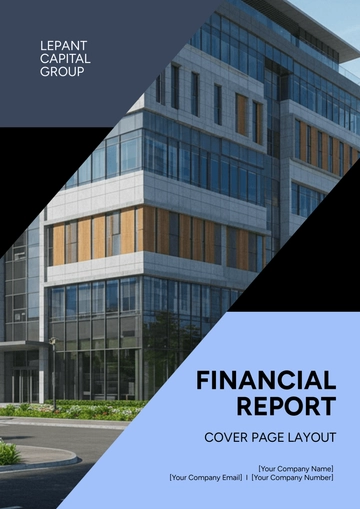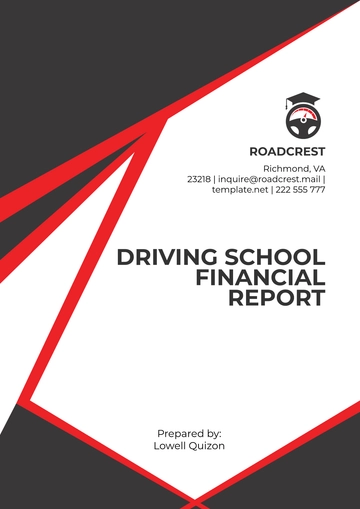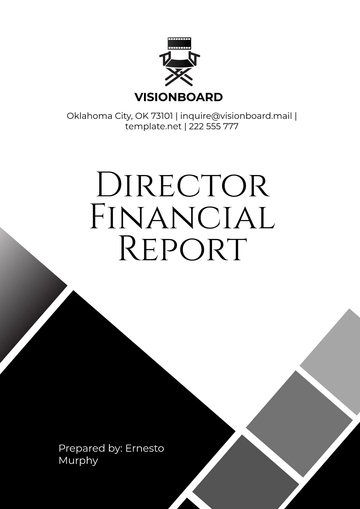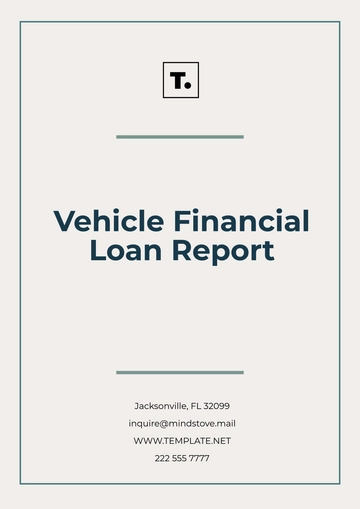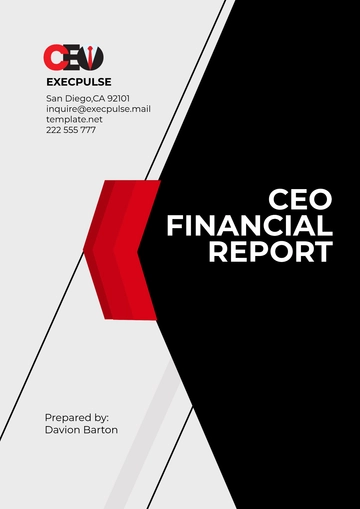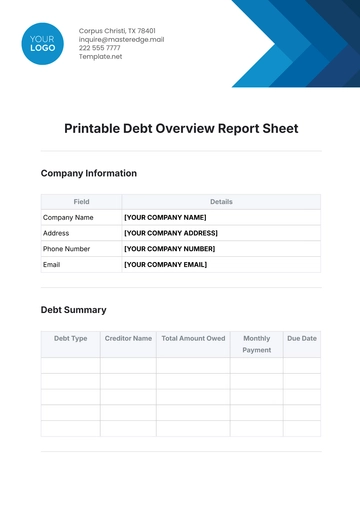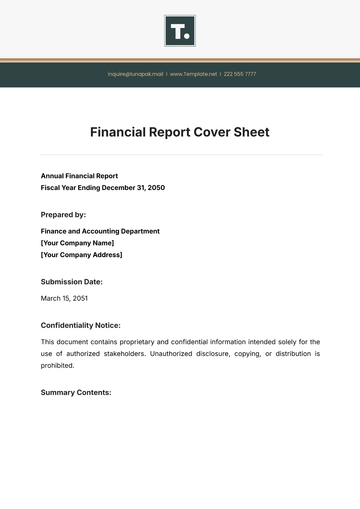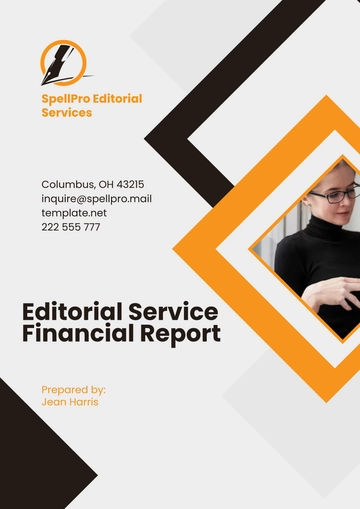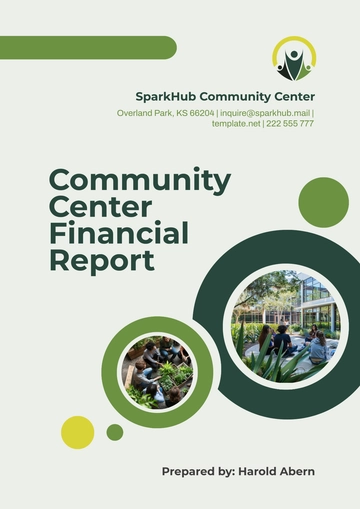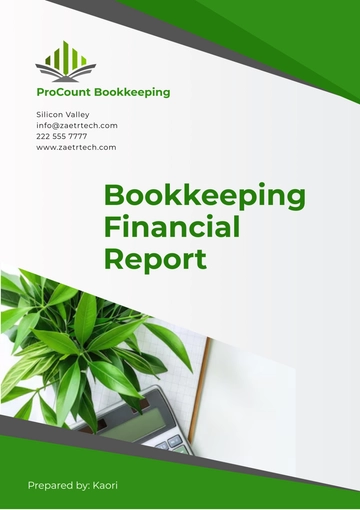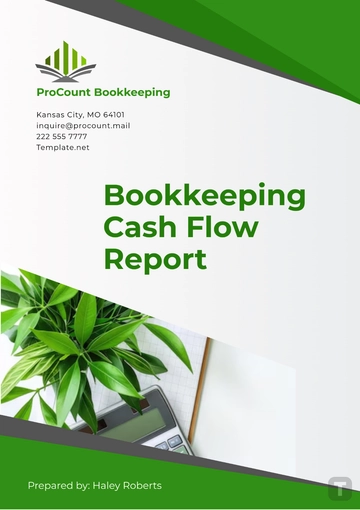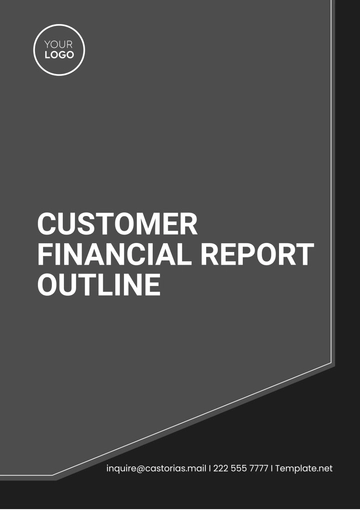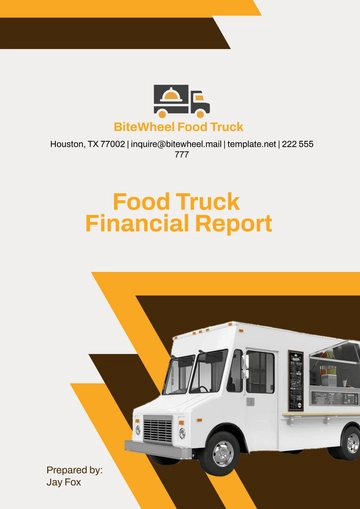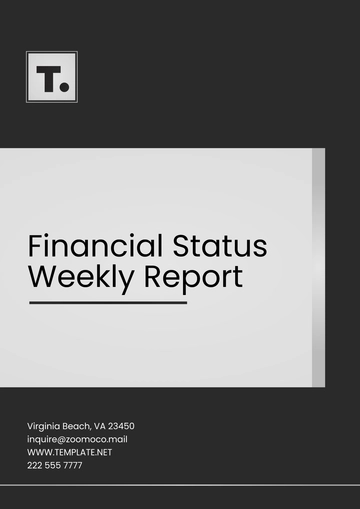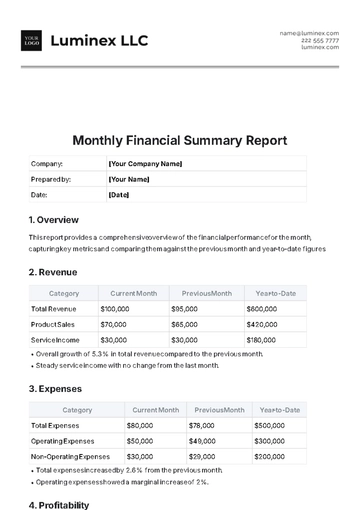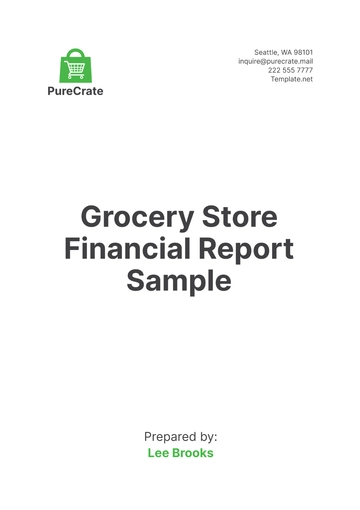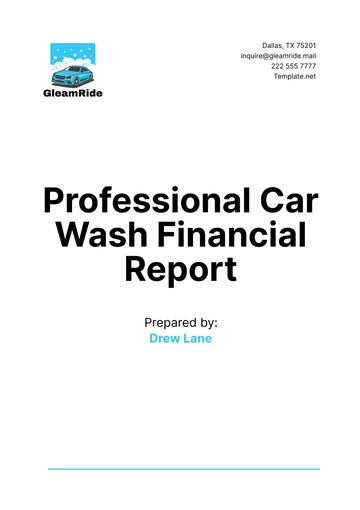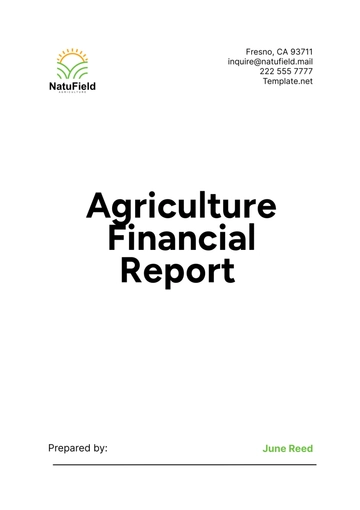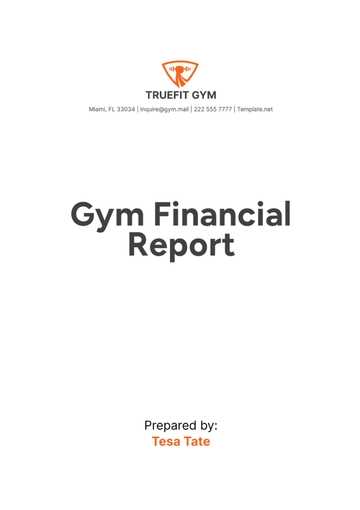Free Car Rental Financial Report
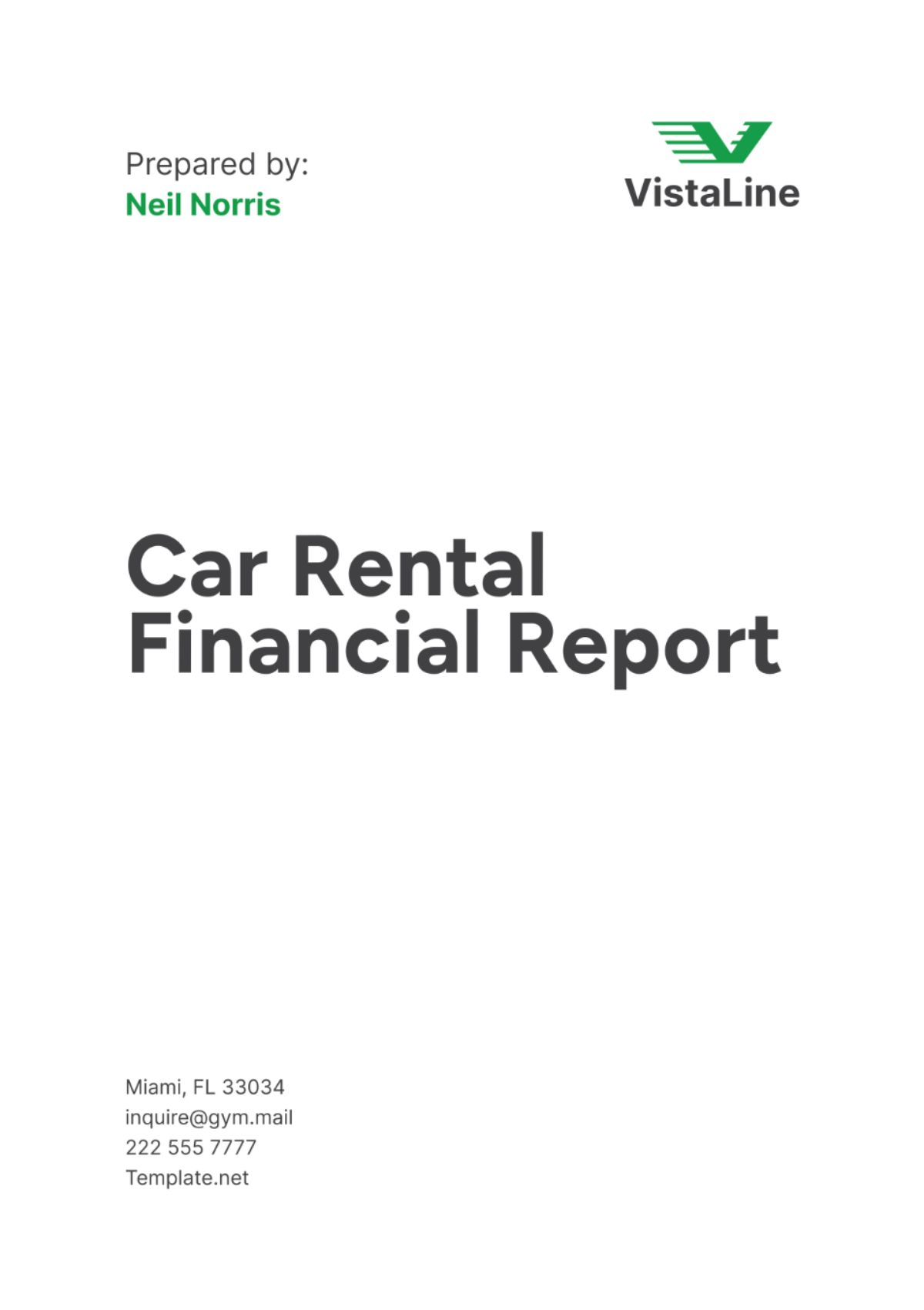
I. Executive Summary
A. Overview of the Company
[Your Company Name] boasts an extensive and varied fleet of vehicles that cater to a multitude of customer needs, offering options that range from economy cars to mid-size vehicles, all the way up to luxurious models. This comprehensive selection enables us to serve a wide array of clientele across numerous settings, including both urban environments and airport locations situated throughout the entire nation. Our commitment to excellence is evident in our dedicated focus on ensuring customer satisfaction and maintaining operational efficiency. We effectively meet the needs of our diverse customer base by providing not only short-term rental options for those traveling for leisure but also long-term rental solutions tailored specifically for corporate clients.
B. Summary of Financial Highlights
In the fiscal year 2050, [Your Company Name] reached a milestone by generating an overall revenue of $[00] million. This figure marks a remarkable increase of [00]% compared to the revenue recorded in the previous year. During this time period, the company's gross profit was reported to be $[00] million. Furthermore, [Your Company Name] successfully achieved an operating income of $[00] million. Impressively, the net income experienced substantial growth, rising by [00]% and culminating in a total of $[00] million. This robust financial performance was primarily fueled by the company's effective cost management strategies and various revenue growth initiatives.
C. Key Performance Indicators (KPIs)
Rental Fleet Utilization Rate: Maintained at [00]%, indicating efficient management of vehicle inventory and high demand.
Average Revenue per Rental: Increased to $[00]/day, reflecting improved pricing strategies and higher bookings in premium vehicle categories.
Customer Satisfaction Index: Achieved a high score of [00]%, underscoring our commitment to quality service and customer retention.
II. Introduction
A. Purpose and Scope of the Report
This detailed report serves to offer stakeholders an in-depth perspective on the financial performance, strategic initiatives, and market standing of [Your Company Name] for the fiscal year that concludes on December 31, 2050. The primary objective of this document is to underscore our operational strengths, showcase our financial stability, and identify future growth opportunities within the highly competitive car rental industry.
B. Overview of the Car Rental Industry
The car rental industry is in a constant state of evolution, as it continually adapts to shifting consumer preferences and the rapid pace of technological advancements. Even in the face of economic fluctuations, the industry shows an impressive degree of resilience. This resilience is fueled by several key factors, including a rise in travel, the growing need for urban mobility, and increased demand for corporate travel services. In light of these dynamics, [Your Company Name] has strategically positioned itself to take full advantage of these emerging trends. We achieve this through a commitment to innovation and the provision of service offerings that are centered around the needs and desires of our customers.
III. Financial Statements
A. Income Statement
Income Statement for FY 2050 | Amount (in $ millions) |
|---|---|
Revenue | [00] |
Cost of Goods Sold | |
Gross Profit | |
Operating Expenses | |
| |
| |
| |
Operating Income | |
Non-Operating Income and Expenses | |
Net Income |
In fiscal year 2050, [Your Company Name] generated $[00] million in revenue, marking a [00]% increase from the previous year, driven by expanded customer base and improved pricing strategies. Cost of goods sold, primarily comprising rental fleet costs, amounted to $[00] million, resulting in a gross profit of $[00] million. Operating expenses totaled $[00] million, including $[00] million in administrative costs, $[00] million in marketing expenditures, and $[00] million in other operational expenses.
B. Balance Sheet
Balance Sheet as of December 31, 2050 | Amount (in $ millions) |
|---|---|
Assets | |
| [00] |
| |
| |
| |
| |
| |
| |
| |
| |
Liabilities | |
| |
| |
| |
| |
| |
| |
| |
Shareholders' Equity | |
| |
|
As of December 31, 2050, [Your Company Name]'s balance sheet reflects total assets of $[00] million, comprising $[00] million in current assets and $[00] million in non-current assets. Liabilities include $[00] million in current liabilities and $[00] million in non-current liabilities, with shareholders' equity standing at $[00] million. This financial position underscores our solid asset base and strong equity position to support future growth initiatives.
C. Cash Flow Statement
Balance Sheet as of December 31, 2050 | Amount (in $ millions) |
|---|---|
Operating Activities | [00] |
Investing Activities | |
Financing Activities | |
Net Increase/Decrease in Cash |
During fiscal year 2050, operating activities generated $[00] million in cash flows, driven by operational income and efficient working capital management. Investing activities included capital expenditures of $[00] million primarily for fleet expansion and technology upgrades. Financing activities involved repayment of $[00] million in short-term loans, resulting in a neutral net cash flow position for the year.
IV. Financial Analysis
A. Key Financial Ratios
Profitability Ratios
Gross Profit Margin: The percentage is zero, which reflects efficient cost management and pricing strategies.
Net Profit Margin: The percentage of zero and zero-tenths indicates an exceptionally high degree of operational efficiency and profitability.
Liquidity Ratios
Current Ratio: The company has a current ratio of 1.67, which indicates it possesses sufficient short-term assets relative to its short-term liabilities, ensuring it has adequate liquidity to meet its financial obligations in the near term.
Quick Ratio: With a ratio of 1.25, we are effectively illustrating our capacity to cover immediate liabilities using our readily available liquid assets.
Efficiency Ratios
Rental Fleet Utilization Rate: Achieving a utilization rate of 100 percent is a testament to the effective management of vehicle inventory and the ability to meet high demand efficiently.
Inventory Turnover Ratio: Six instances, demonstrating the effective use of rental fleet and efficient inventory management practices.
Solvency Ratios
Debt-to-Equity Ratio: A leverage ratio of seventy percent, which indicates a conservative leverage position and a strong equity base.
Interest Coverage Ratio: Our ability to comfortably cover interest expenses with operating income is confirmed by a ratio of 5.0.
B. Trend Analysis
The revenue growth, which stands at a percentage value of [00] percent compared to the previous year, is a clear indication of the strong market demand and the successful pricing strategies that were put into effect over the course of the entire fiscal year.
Through the implementation of cost management initiatives, there was a achieved a [00]% reduction in operating expenses. This significant decrease not only enhanced overall profitability but also improved operational efficiency across the organization.
V. Business Performance and Operational Highlights
A. Rental Fleet Utilization Rate
Over the course of the fiscal year 2050, [Your Company Name] sustained an impressive rental fleet utilization rate of [00]%. This notable achievement underscores our exemplary fleet management practices and our capacity to address and fulfill the high levels of customer demand spanning across all categories of vehicles. Our strategic alliances with prominent travel agencies and corporate clients have played an instrumental role in optimizing the utilization rates of our fleet, ultimately contributing to this significant accomplishment.
B. Average Revenue per Rental
During the fiscal year 2050, the average revenue generated per rental increased to an amount of $[00] per day. This increment signifies an improvement of [00]% in comparison to the figures recorded in the preceding fiscal year. The significant growth observed can be credited to several key factors. These include the implementation of more sophisticated pricing strategies, effective upselling initiatives particularly aimed at premium vehicle categories, and the development of improved customer segmentation strategies. Additionally, the company’s strategic emphasis on delivering value-added services, coupled with a commitment to maintaining competitive pricing, positions us advantageously within the marketplace.
C. Customer Acquisition and Retention Metrics
[Your Company Name] attained an impressive customer satisfaction index of [00]% during the fiscal year 2050. This achievement underscores our unwavering dedication to providing outstanding customer service and upholding elevated standards of satisfaction. The substantial repeat business from loyal customers, coupled with positive word-of-mouth referrals, greatly bolstered our efforts in retaining customers. Furthermore, our strategic investments in digital marketing initiatives and customer loyalty programs have played a crucial role in enhancing our market presence and deepening relationships with our clientele.
VI. Risk Factors and Challenges
A. Market Risks
The car rental industry is subject to a variety of risks which stem from several interconnected and external elements. Primarily, the industry is vulnerable to economic downturns; during periods of economic contraction, consumers and businesses alike tend to reduce their spending on non-essential services, including car rentals. This contraction in spending directly impacts the industry's revenue streams. Additionally, fluctuations in travel demand—whether due to seasonal variations, changing consumer preferences, or broader social trends—can result in unpredictable cycles of high and low demand for rental vehicles. Regulatory changes further add a layer of complexity to the risks faced by the car rental industry. Laws and regulations governing tourism and business travel can change, often in response to new governmental priorities or international agreements, and these changes can impose new operational requirements or restrictions that the industry must quickly adapt to.
External factors like fuel price volatility and geopolitical events can significantly impact the car rental industry. Rising fuel costs increase operational expenses, squeezing profit margins unless passed on to potentially price-sensitive consumers. Geopolitical issues can also disrupt consumer travel habits and logistics. To manage these risks, car rental companies need agile strategies and risk mitigation measures. This may involve diversifying services, investing in fuel-efficient or alternative-energy vehicles, adjusting pricing dynamically, and staying informed about regulatory changes to adapt quickly.
B. Operational Risks
Managing maintenance costs, vehicle depreciation, and fleet renewal cycles are critical operational challenges for [Your Company Name]. Effective fleet management strategies, including predictive maintenance technologies and strategic fleet upgrades, are essential to mitigate these risks and maintain operational efficiency. Continuous monitoring of market trends and consumer preferences allows us to adapt our fleet strategy proactively.
C. Regulatory Risks
Ensuring that our company adheres to the multitude of local and international regulations presents significant regulatory challenges. These regulations encompass a broad array of areas such as environmental standards, data protection laws, and licensing requirements. Meeting these stringent regulations is not merely a legal obligation but also a reflection of our commitment to responsible corporate governance. At [Your Company Name], we prioritize regulatory compliance through the implementation of robust internal controls, which serve as a foundation for our operational framework. These controls are complemented by regular audits that help us identify and rectify any potential areas of non-compliance.
Furthermore, we engage proactively with regulatory authorities to stay abreast of the latest regulatory changes and to ensure that we are always in compliance with current laws. By diligently adapting to the ever-evolving regulatory landscape, we safeguard the continuity of our business operations and bolster our reputation as a responsible corporate citizen. This ongoing dedication to compliance not only ensures our legal standing but also enhances our overall credibility and trustworthiness in the eyes of our stakeholders.
VII. Strategic Initiatives and Future Outlook
A. Expansion Plans
Looking ahead, [Your Company Name] plans to expand its geographic footprint in high-demand markets, focusing on urban centers and popular tourist destinations. Strategic partnerships with hotels, airlines, and travel agencies will support our expansion efforts and enhance our service offerings to meet evolving customer needs.
B. Innovation and Technology Adoption
Innovation remains a cornerstone of our growth strategy. Investments in smart vehicle technology, including GPS tracking systems and connected car solutions, will enhance fleet management efficiency and customer experience. The development of a mobile app for seamless booking, vehicle tracking, and customer support aims to elevate service delivery and customer satisfaction levels.
C. Market Positioning and Competitive Strategies
To maintain our competitive edge, [Your Company Name] will continue to differentiate through superior customer service, flexible rental options, and competitive pricing strategies. Strategic marketing initiatives, including targeted promotions and loyalty rewards programs, will strengthen customer engagement and retention. By leveraging data analytics and market insights, we aim to optimize pricing models and enhance profitability amidst competitive pressures.
VIII. Conclusion
A. Summary of Financial Performance
The fiscal year of 2050 represented a significant and transformative period for [Your Company Name]. This year was marked by a substantial increase in revenue, a notable improvement in profitability, and significant enhancements in operational efficiencies. These advancements collectively reflect our company's robust financial performance, which highlights our resilience within a highly competitive market environment. Moreover, it demonstrates our capability to effectively identify and capitalize on emerging growth opportunities.
B. Strategic Priorities for Future Growth
Looking forward, our strategic priorities include expanding our market presence, investing in technological innovation, and maintaining a customer-centric approach to sustain long-term growth and profitability. By aligning our business strategies with evolving market dynamics and consumer preferences, we are well-positioned to achieve sustainable success in the car rental industry.
- 100% Customizable, free editor
- Access 1 Million+ Templates, photo’s & graphics
- Download or share as a template
- Click and replace photos, graphics, text, backgrounds
- Resize, crop, AI write & more
- Access advanced editor
Introducing the Car Rental Financial Report Template from Template.net. This editable and customizable template is your essential tool for crafting detailed financial insights. Streamline your reporting process with the AI Editor Tool, ensuring precision and efficiency. Perfect for CFOs and finance professionals seeking clarity and professionalism in their financial statements.
You may also like
- Sales Report
- Daily Report
- Project Report
- Business Report
- Weekly Report
- Incident Report
- Annual Report
- Report Layout
- Report Design
- Progress Report
- Marketing Report
- Company Report
- Monthly Report
- Audit Report
- Status Report
- School Report
- Reports Hr
- Management Report
- Project Status Report
- Handover Report
- Health And Safety Report
- Restaurant Report
- Construction Report
- Research Report
- Evaluation Report
- Investigation Report
- Employee Report
- Advertising Report
- Weekly Status Report
- Project Management Report
- Finance Report
- Service Report
- Technical Report
- Meeting Report
- Quarterly Report
- Inspection Report
- Medical Report
- Test Report
- Summary Report
- Inventory Report
- Valuation Report
- Operations Report
- Payroll Report
- Training Report
- Job Report
- Case Report
- Performance Report
- Board Report
- Internal Audit Report
- Student Report
- Monthly Management Report
- Small Business Report
- Accident Report
- Call Center Report
- Activity Report
- IT and Software Report
- Internship Report
- Visit Report
- Product Report
- Book Report
- Property Report
- Recruitment Report
- University Report
- Event Report
- SEO Report
- Conference Report
- Narrative Report
- Nursing Home Report
- Preschool Report
- Call Report
- Customer Report
- Employee Incident Report
- Accomplishment Report
- Social Media Report
- Work From Home Report
- Security Report
- Damage Report
- Quality Report
- Internal Report
- Nurse Report
- Real Estate Report
- Hotel Report
- Equipment Report
- Credit Report
- Field Report
- Non Profit Report
- Maintenance Report
- News Report
- Survey Report
- Executive Report
- Law Firm Report
- Advertising Agency Report
- Interior Design Report
- Travel Agency Report
- Stock Report
- Salon Report
- Bug Report
- Workplace Report
- Action Report
- Investor Report
- Cleaning Services Report
- Consulting Report
- Freelancer Report
- Site Visit Report
- Trip Report
- Classroom Observation Report
- Vehicle Report
- Final Report
- Software Report
